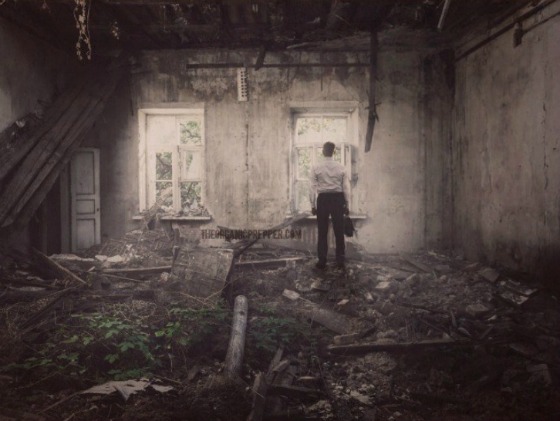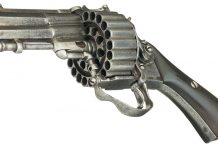Looking around I couldn’t find an important piece of information – how one should fight in a SHTF situation. I think this is an important topic to cover because it has several special circumstances that need to be considered.
- Ammo will need to be conserved – I don’t care how many rounds you have saved up, it won’t be enough and the long-term of a complete collapse of society (potentially 40+ years) means that from the get-go every single shot will be precious.
- Due to the fact that it is almost a certainty that combatants will be intensely familiar with the area and possibly have been residing for a long period of time it rather changes the mechanics of combat.
- Due to limited manpower and the fact that any attrition will be felt heavily, patrols, night combat, and outposts will be nigh impossible to field with regularity.
- Expanding on the above, most medication has a limited shelf life and even minor wounds will start to become quite threatening (increased risk of disease and infection) – Medication will run out fast.
With that in mind, let us analyze why tactical considerations are always important and what style of fighting we will have to adopt. Due to the fact that ammo will always be a luxury, modern tactics which rely on the idea of expending more ammo in a gunfight at the foe over men or positioning is obviously not possible.
Now – every weapon you should use should focus on stopping power, the smallest cartridge in your arsenal should be 6.5mm (handguns excluded). Whilst 5.56 has good aerodynamics and is plentiful it simply is designed to suppress whilst a mortar, grenade, or artillery piece does the killing – it simply isn’t designed with taking down man-sized targets with minimal rounds (I have heard anecdotes of anywhere between 5-15 torso shots on an adrenalized up for before they go down).
With that out-of-the-way – let us look at the overall thought process and things to identify before you engage in any situation.
- Manpower: Who has more bodies at their disposal – do they look weak and ill-trained or are their movements/positions well thought out and the men (and women!) well fed? Are they all moving armed or do they have the luxury of people dedicated to guard duties?
- Armament: What weapons are they using – are they rusted and in ill repair? Can you identify if they are carrying enough ammo for everyone to fight adequately?
- Maneuver: Who is in a better position? – do they have a path of pursuit and escape; do they have a height advantage? Importantly are they defending something valuable (like a base or stash)? If so you may have the luxury of being able to attack at will, the same thing goes if you are on the defensive.
From these 3 guidelines a threat level can be deduced, obviously, there will be some situation where one advantage is so great that it will offset disadvantages – this is a rough guideline. If they check off none, then you are probably in a position to utilize a diplomatic approach and join groups. If they check off one of 3 then you should approach with caution, maybe attempt to surround them at night and make your intentions clear – again diplomacy may be the best decision here. If they check two of three than combat should be avoided until you are in a position to use your advantage to overwhelm them (attacking at night, in an ambush, etc). Do not attempt diplomacy at this threat level as you will not be in a position to make a fair deal and all emphasis should be placed on the evening the odds or avoiding the threat. Finally, if they check off all three do not engage at all, the goal is survival not heroic death and if worst comes to worst retreating completely or surrendering goods is preferable to a bullet in the brain. They still are people and unless you are absolutely sure that they are completely hostile they may be willing to work with you.
Now with the overall threat assessment done, we may now talk about the five stages of combat (Recce, Skirmish, Combat, Push/Withdraw, Decisive Blow/Total Withdrawal).
RECCE
“If you know the enemy and know yourself; you need not fear the result of a hundred battles.” – Sun Tzu
Recce is often the most overlooked stage of combat but it is BY FAR the most important. Recce is the mode of thought that you should be on at all times, dispatching a scout if possible and identifying incoming threats. The more focus you place on a recce the more forewarning you will have as to inbound threats, and more time to prepare/evacuate. Obviously, you will be unable to have a complete recon net due to limited supplies but any extra hands should be trained for recce and dispatched when possible.
This is where you will identify your enemies capabilities on your threat checklist and decide whether to choose engagement/diplomacy/retreat. Just to outline how vital this is, 90% of a good tactician’s skill is how they deploy and utilize information from recce, with the other 10% being a good leader with good interpersonal skills and the ability to keep cool under pressure.
SKIRMISH


This is where you action your initial decision on engaging the enemy, it is the period where hostilities have begun but you are not locked into a fight. This will be the period where you harry the enemy with traps and marksman to attempt to pick off men before you attack or they reach your designated point of defense (usually your fortifications).
Some skirmishes may only last a minute or two and some may be the entire fight, note that your main focus should be leaders and sensitive targets (heavily armed fighters and if possible, medics). The goal of this will be to break your enemies organization and morale when combat begins – that being said…
COMBAT
This will be the time when individual training counts. Communication will be close to impossible in this brief period and this is where the most casualties will be sustained – though despite this being the most calamitous point of a fight it will be the least important for you as the person in command. Your main role will be encouraging your men and stopping any obvious screw-ups.
What you should be watching closely is the movement of combat, are you making good progress towards your goal or are you sustaining casualties – are there hostile elements that you were unaware of?
Before I make my next point the thing to keep in mind is that in a ‘battle’ there may be multiple combats; intensive fighting between periods of skirmish, pushing, and retreat.
PUSH/WITHDRAW
This is as much a phase of combat as it is its own separate action, and the commands will have to be executed well and especially in the case of a withdrawal you need pre-planned points to ensure cohesiveness.
Really the most that can be said of pushing is that your enemy has begun to break or have thinned enough that they can no longer maintain the area their position demands, as I would expect almost all combatants to be ill-trained this will almost certainly result in a decisive victory as the enemy breaks completely.
However; keeping your men together in the case of withdrawal is another issue. The things to watch out for: can you retreat to your designated point safely (if you have one – keep in mind most defense should take a multi-layered approach), do you have enough manpower left to pursue another attack, is the enemy willing to pursue or are they holding the position. If it is the latter the combat may switch to a skirmishing stance again.
TOTAL WITHDRAWAL/ DECISIVE BLOW
Decisive blow: Your enemy has completely shattered, this is the period encompassing cleaning up resistance before taking stock of supplies and beginning the process of recce again – re-assessing.
Total Withdrawal: This comes about one of two ways – Your force has broken and is fleeing in a blind panic, or it is (hopefully) an organized retreat to put some distance between yourselves and the enemy combatants and re-assess. You will again need to survey the situation and determine the next point of action for your group.
Something to note – Overall your group should always be prepared for a total retreat; even an easy fight could be a ruse and you always need to be prepared to move and maintain as many supplies as possible.











![How To: Survival Knots [With Videos]](https://www.dailypreppernews.com/wp-content/uploads/2019/06/knots-696x464-100x70.jpg)








